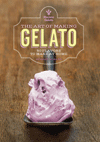How Do Enzymes Affect Production and Quality of Ice Cream?
Enzymes are proteins that speed up the rate of chemical reactions. Ice cream is made from a host of naturally occurring raw materials with enzyme activity, manufactured ingredients produced using enzyme systems and/or materials to which enzymes have been added.

Enzymes are proteins that speed up the rate of chemical reactions. Ice cream is made from a host of naturally occurring raw materials with enzyme activity, manufactured ingredients produced using enzyme systems and/or materials to which enzymes have been added. These, singularly or in combination, can affect production and quality both positively and negatively.
We will concentrate on the more direct enzymatic effects rather than effects from non-ice cream-related processes (i.e., production of certain corn-derived sweeteners in which enzymes play a role), particularly on enzyme activities that directly affect ice cream functionality and quality.
The enzymes that affect ice cream negatively are those that bring about undesirable changes in proteins (proteases) and fat (lipases). They can be inactivated by heat, usually below pasteurization conditions. Therefore, there should not be enzyme activity in ice cream after processing or in any pasteurized dairy ingredient. However, enzyme activity in dairy ingredients that occurs before heating can have lingering negative effects.
Protease effects in ice cream produce protein destabilization that causes conditions such as whey separation in mix and finished ice cream, curdy appearance in melted ice cream and, in the extreme, a modification of protein’s role in critical elements of fat agglomeration. Even relatively minor effects can predispose protein to be destabilized by extreme shear and temperature conditions to which it is subsequently exposed during ice cream processing. Also, the very slightest of protease activity can produce undesirable off flavors, identified variously as “bitter,” “putrid,” “unclean,” etc.
 Proteases are produced by proteolytic bacteria, i.e., those that prefer protein to lactose as an energy source. The most common of these are “psychrotrophs,” so called because they can grow at or near refrigeration temperatures. Pasteurization destroys most psychrotrophs, but their proteases generally survive. Therefore, it is important to minimize the generation of bacterial proteases by pasteurizing raw dairy ingredients soon after receipt and avoiding post-pasteurization psychrotrophic contamination. To avoid protease off flavors in dairy ingredients, their sensory properties should be evaluated when received. Protein destabilization is more difficult to detect, which adds to the importance of controlling processing factors that minimize protease exposure and other destabilizing factors.
Proteases are produced by proteolytic bacteria, i.e., those that prefer protein to lactose as an energy source. The most common of these are “psychrotrophs,” so called because they can grow at or near refrigeration temperatures. Pasteurization destroys most psychrotrophs, but their proteases generally survive. Therefore, it is important to minimize the generation of bacterial proteases by pasteurizing raw dairy ingredients soon after receipt and avoiding post-pasteurization psychrotrophic contamination. To avoid protease off flavors in dairy ingredients, their sensory properties should be evaluated when received. Protein destabilization is more difficult to detect, which adds to the importance of controlling processing factors that minimize protease exposure and other destabilizing factors.
The other negative enzyme activity involves lipase activity. Lipase is naturally found in raw milk and causes the release of free fatty acids. These low molecular weight (and volatile) compounds produce a flavor profile that is desirable in some cheeses but not in ice cream, where it is referred to as “rancidity.” Homogenization increases the exposure of fat to lipase, so its effects are intensified when homogenized, fat-containing mixtures are blended with under-heated dairy systems. Rancidity can be prevented by not homogenizing unheated systems, avoiding mixing raw dairy ingredients with a homogenized product and rejecting dairy ingredients in which rancidity is present when received.
Positive enzyme effects in ice cream include the hydrolysis of lactose by lactase, and the cross-linking of proteins by transglutaminase.
Lactase can be used to produce lactose-reduced or lactose-free ice creams by hydrolyzing the disaccharide lactose into its component monosaccharides-glucose and galactose. It is important to take into account the freezing point depression effects of that conversion when formulating and freezing such ice creams. Lactase enzymes are also important in the production of frozen yogurt. They are produced by yogurt cultures as the first step in the metabolism that converts lactose into lactic acid and the characteristic yogurt flavor compounds.
Transglutaminase cross links milk protein in ways that substantially increase its water immobilization properties. It has been effective in a variety of dairy foods, such as yogurt. Its use in ice cream is limited but promising.
For further information on enzyme effects, plan to join us at the Tharp & Young On Ice Cream Short Course, Workshops and Clinics. See www.onicecream.com for complete information.

Tharp & Young
Enzymes are proteins that speed up the rate of chemical reactions. Ice cream is made from a host of naturally occurring raw materials with enzyme activity, manufactured ingredients produced using enzyme systems and/or materials to which enzymes have been added. These, singularly or in combination, can affect production and quality both positively and negatively.
We will concentrate on the more direct enzymatic effects rather than effects from non-ice cream-related processes (i.e., production of certain corn-derived sweeteners in which enzymes play a role), particularly on enzyme activities that directly affect ice cream functionality and quality.
The enzymes that affect ice cream negatively are those that bring about undesirable changes in proteins (proteases) and fat (lipases). They can be inactivated by heat, usually below pasteurization conditions. Therefore, there should not be enzyme activity in ice cream after processing or in any pasteurized dairy ingredient. However, enzyme activity in dairy ingredients that occurs before heating can have lingering negative effects.
Protease effects in ice cream produce protein destabilization that causes conditions such as whey separation in mix and finished ice cream, curdy appearance in melted ice cream and, in the extreme, a modification of protein’s role in critical elements of fat agglomeration. Even relatively minor effects can predispose protein to be destabilized by extreme shear and temperature conditions to which it is subsequently exposed during ice cream processing. Also, the very slightest of protease activity can produce undesirable off flavors, identified variously as “bitter,” “putrid,” “unclean,” etc.

The other negative enzyme activity involves lipase activity. Lipase is naturally found in raw milk and causes the release of free fatty acids. These low molecular weight (and volatile) compounds produce a flavor profile that is desirable in some cheeses but not in ice cream, where it is referred to as “rancidity.” Homogenization increases the exposure of fat to lipase, so its effects are intensified when homogenized, fat-containing mixtures are blended with under-heated dairy systems. Rancidity can be prevented by not homogenizing unheated systems, avoiding mixing raw dairy ingredients with a homogenized product and rejecting dairy ingredients in which rancidity is present when received.
Positive enzyme effects in ice cream include the hydrolysis of lactose by lactase, and the cross-linking of proteins by transglutaminase.
Lactase can be used to produce lactose-reduced or lactose-free ice creams by hydrolyzing the disaccharide lactose into its component monosaccharides-glucose and galactose. It is important to take into account the freezing point depression effects of that conversion when formulating and freezing such ice creams. Lactase enzymes are also important in the production of frozen yogurt. They are produced by yogurt cultures as the first step in the metabolism that converts lactose into lactic acid and the characteristic yogurt flavor compounds.
Transglutaminase cross links milk protein in ways that substantially increase its water immobilization properties. It has been effective in a variety of dairy foods, such as yogurt. Its use in ice cream is limited but promising.
For further information on enzyme effects, plan to join us at the Tharp & Young On Ice Cream Short Course, Workshops and Clinics. See www.onicecream.com for complete information.
Looking for a reprint of this article?
From high-res PDFs to custom plaques, order your copy today!









